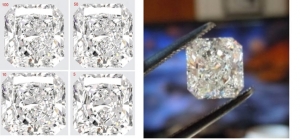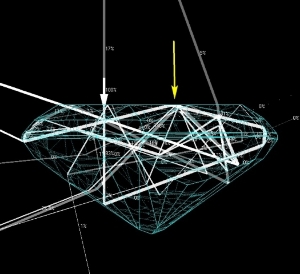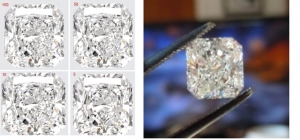- Joined
- Jan 7, 2009
- Messages
- 10,377
Yoram- the stone is an N color- so it's possible the larger, bottom piece was a light yellow ( maybe U-V, W-X for example).
It's super strong blue fluorescence, which makes it look whiter- but it's fairly yellow in person. I believe the cutter ( who is indeed very skilled in such stones) was going for a light yellow
I'll get some more shots and post them later
ccl- from what I can tell, the simulations are lacking due to the number of bounces.
Theoretically, plotting out and simulating a stone with 5 bounces in reality is a lot easier than doing so with something like a crushed ice stone where the number of bounces must be impossible to accurately calculate.
Even a small tilt will change the number of bounces significantly.
Is it possible that the bounces are what's throwing off the simulation?
It's super strong blue fluorescence, which makes it look whiter- but it's fairly yellow in person. I believe the cutter ( who is indeed very skilled in such stones) was going for a light yellow
I'll get some more shots and post them later
ccl- from what I can tell, the simulations are lacking due to the number of bounces.
Theoretically, plotting out and simulating a stone with 5 bounces in reality is a lot easier than doing so with something like a crushed ice stone where the number of bounces must be impossible to accurately calculate.
Even a small tilt will change the number of bounces significantly.
Is it possible that the bounces are what's throwing off the simulation?









300x240.png)